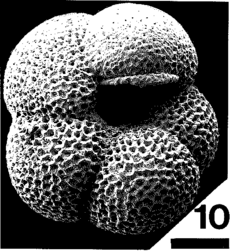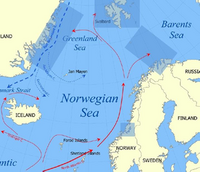Contact: Dr. Robert F. Spielhagen
Isotopic and geochemical analyses and abundances of fossil foraminifera are common tools for paleoceanographic reconstructions. Oxygen isotopic (d18O) records of sediment cores provide information about variation in sea surface temperatures and salinities in the past, while carbon isotopic (d13C) records refer to e.g., paleoproductivity and stratification.
This study intends to improve the understanding of the correlation between recent oceanic variability and the composition of shells of living calcareous microorganisms. This is important for a correct interpretation of fossil stable isotope data. The aim of our calibration study is to investigate how in-situ conditions like salinity, temperature, and stable isotopic ratios of the ambient water are reflected in the tests of living foraminifera (further information).




